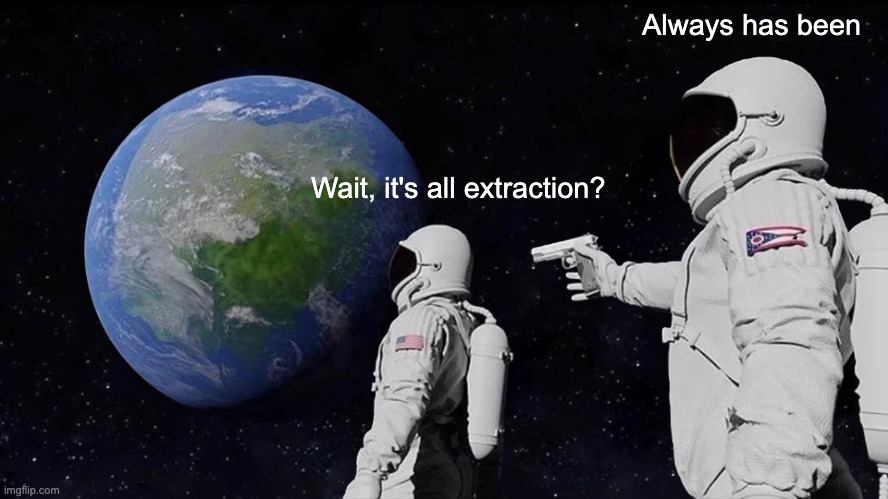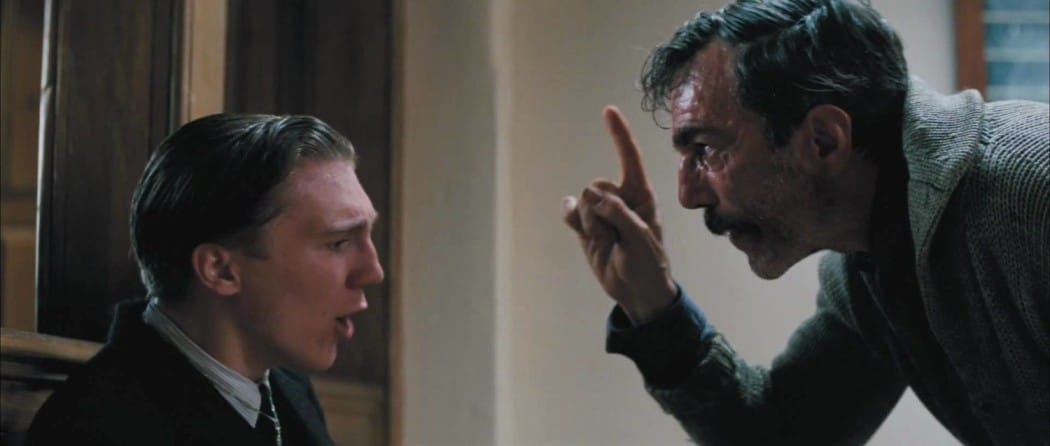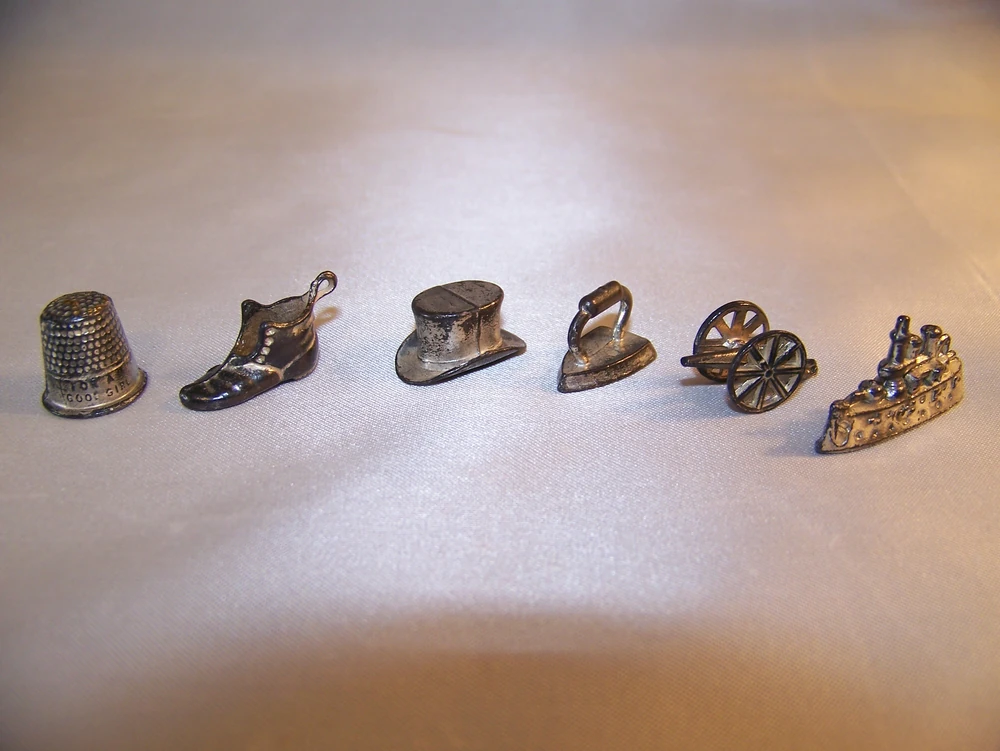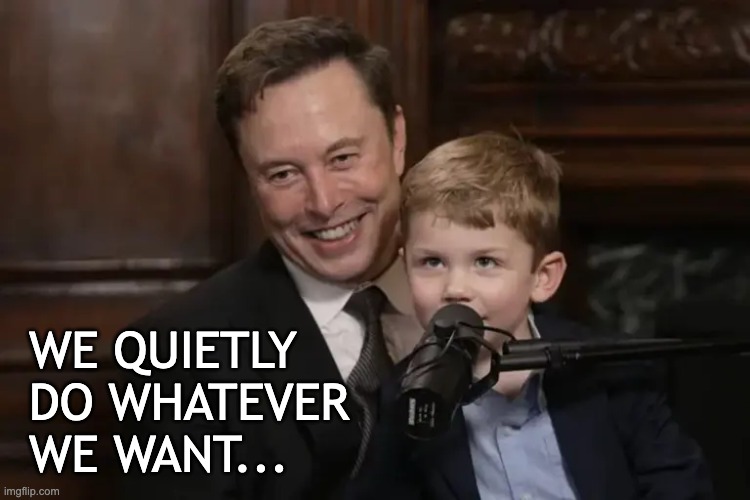Strip-mining Americans for Fun and Profit

Our entire lives we’ve been told that America is the land of opportunity, where hard work leads to success and where economic growth benefits everyone. Democrats and Republicans measure their success by the stock market and GDP. Economists claim that 2024 was the best year ever. But as we look around, something doesn’t add up. Wages stagnante. Healthcare costs leave everyone in debt, if they can get it. Rent and groceries drain bank accounts despite working respectable, necessary jobs. Are they lying? Where’s the beef?
The non-secret is that this system is working as designed. The money was never supposed to go to you. You’re a human resource, a depreciating machine. Your manager–hell, the whole fucking system–is trying to squeeze as much value out of you as possible before you reach your expiration date. After that, you’re just a cost to be minimized.

This isn’t an accident or a side effect, it’s how wealth extraction works. The workforce itself is being strip-mined, a Superfund site in waiting. This has already happened in Puerto Rico—a slice of American planned poverty, where our fragile democracy died early. You’ll see soon how what happened there isn’t the exception—it’s the blueprint.
Our system isn’t designed to create wealth and prosperity for regular people. The problem isn’t partisan gridlock; it’s not book bans; it’s not DEI hires in Los Angelas; and it’s not the Deep State. The problem is our system is designed for wealth extraction–to bleed value from workers, consumers, and whole nations, funneling it into the hands of the people that get to play Monopoly.
This isn’t about big government vs. small government or left vs. right. It’s about who is playing the game and who is getting played. I hate to break it to you but having 500k in a Roth IRA won’t let you pick the top hat.

America’s Original Sin
The grift didn’t start with Fannie Mae and the housing bubble, it didn’t start with the industrialists carving up railroads and oil fields, and it didn’t start with Jim Crow robbing Black Americans of generational wealth. No, the great American grift is older than America itself.
The first European feet to step on this land did so with greed in their eyes and victims in their boats. Businessmen, sent by The Virginia Company, sailed from England by investors who heard there was gold, silver, and unclaimed land to seize. Over half of the original settlers were “gentlemen” a polite way of saying they were aristocrats that didn’t work. These men weren’t here to build—they were here to cash in–to send profits back to England, no matter the cost. This group of smooth-skinned exploiters were themselves pawns of the investors back home who cared little for their struggle. If the settlers starved, if they fought endless wars with the Native tribes, if they turned on each other and ate their own dead—that was their problem. The investors back in London were just waiting on their returns.
And all those things actually happened. At first they dug in the Virgina mud for gold as their food supplies dwindled, encroaching on the local Pohatan tribe’s land. The natives traded with them at first, but when it became clear that the settlers were more interested in taking than coexisting, relations soured. By the first winter, seven out of ten settlers were dead. Disease, starvation, and conflict erupted. A man was burned alive for stealing bread. Others resorted to cannibalism. When archaeologists excavated Jamestown centuries later, they found the skull of a fourteen-year-old girl, her bones marked with knife cuts where the flesh had been stripped away.
By the time supply ships arrived, the colony was in ruins, a failed investment propped up only by more desperate men shipped in as replacements. But where others saw disaster, the Virginia Company saw a new angle. If they couldn’t mine gold, they would mine people. The land wasn’t valuable on its own, but with enough unpaid labor, it could be. The colony’s leaders turned to tobacco, transforming it into the first cash crop of the New World. To work the fields, they brought over indentured servants, debt prisoners, and enslaved Africans. The experiment had failed as a gold mine, but as a plantation? It could still be profitable.
The Virginia Company was applying the formula that would define American wealth for centuries to come. Sell the dream of easy riches. Promise opportunity. Use up the labor force. Extract everything of value. Leave the people with nothing. From the tobacco fields of Jamestown to the company towns of the Industrial Revolution, from subprime mortgages to the gig economy, the method hasn’t changed. Today, we don’t send ships full of hopeful investors to die in the wilderness—we send them into the debt economy. We sell predatory loans to workers and when they fail we buy their homes and rent them back to them at a premium. The numbers are bigger, the paperwork is cleaner, and the deaths happen in hospital billing departments instead of on the shores of the James River. But the game is the same.
Land of the Free
But the shame of Jamestown came long before our great founding fathers constructed this one nation, under God, with liberty and justice for all. We were meant to be something different. Something better. A republic, not a monarchy. A land where no king, no noble, no tyrant could trample on the rights of the people.
We became free from the tyranny of a crown that saw men as peasants. We built a Constitution that encoded and swore to protect representation, free speech, due process, and the right to defy oppression. We declared to the world that all men are created equal, that government must be accountable to its citizens, and that power should rest in those people.
And in the centuries that followed, we have seen these principles shine. We saw them in the soldiers who bled on battlefields to preserve the Union and end slavery. We saw them in the voices of women and civil rights leaders who fought to gain what their Constitution had long promised. We saw them in the workers who battled against factory lords and sweatshop owners for the dignity of an honest wage. We saw them in every moment where America lived up to its promise—where justice shined a light on the darkness.
But justice, though noble, has never been enough to dismantle our original sin.
The men who signed the Declaration of Independence did so while standing on land seized from others. The Constitution was drafted in rooms where half the men held human beings in bondage. The victories of the Civil War were followed not by justice, but by a new system of control: convict leasing, debt peonage, and racial terror.
The moment enslaved people were declared free, the system that had profited from them found new ways to extract their labor. The Black Codes criminalized everyday life—walking without proof of employment, assembling in groups, looking a white man in the eye. Former slaves were arrested on petty charges, shackled, and leased to the very same landowners who had once held them as property. Prison became the new plantation.
Convict leasing was an open secret, its brutality worse than slavery itself. Landowners had no incentive to keep their leased prisoners alive, and thousands were worked to death in fields, coal mines, and railroads. When that system came under scrutiny, the economy didn’t change—just the branding. Debt peonage, sharecropping, voter suppression, and lynching ensured that Black Americans remained an exploited underclass.
But cracks began to form.
The Great Migration saw millions of Black Americans flee the South, seeking factory jobs, better wages, and a chance to build lives beyond the shadow of the plantations. In the cities, they formed communities, built businesses, elected local leaders. Labor movements grew stronger, and for the first time, workers—Black and white—stood together in the streets, demanding fair wages, safe conditions, and an end to child labor.
The Great Depression should have crushed them, but instead, it forced America to reconsider who the economy should serve. The New Deal rewrote the rules, curbing Wall Street’s excesses, protecting workers, establishing a social safety net. The government put people to work building bridges, roads, and schools. It wasn’t perfect—Southern Democrats made sure Black workers were largely excluded—but it was a glimpse of something different. A system that, for once, served people instead of profit.
Then came the war, and everything changed again.
World War II proved that America could mobilize its economy for more than just the wealthy. The war effort pulled the country out of depression, putting millions to work. Factories roared to life. Union power surged. Women, long shut out of industry, became essential. Black soldiers fought and died for a country that still treated them as second-class citizens—but they came home determined to claim what was owed to them.
The civil rights movement followed. They marched. They sat. They bled. They won.
Jim Crow fell, voting rights were secured, schools were desegregated. The country that had once defined itself by exclusion was forced to reckon with its promises.
And for a moment, it seemed like the machine might break.
But the economy never skipped a beat.
Slavery was made illegal—except as punishment for a crime. That loophole was all the system needed. And when the civil rights movement made it impossible to legally exclude Black Americans from voting, owning property, and building wealth, the solution was simple: turn them into criminals.
The first wave of tough-on-crime policies wasn’t about crime at all—it was about control. Nixon’s domestic policy chief, John Ehrlichman, later admitted as much:
“We knew we couldn’t make it illegal to be either against the war or Black, but by getting the public to associate the hippies with marijuana and Blacks with heroin, and then criminalizing both heavily, we could disrupt those communities.”
It wasn’t about safety. It was about keeping the right people powerless. With protest leaders in jail, communities destabilized, and entire generations marked as criminals, the backlash became law. Social programs were gutted, police budgets swelled, and prisons became a booming industry. By the 1990s, the “tough-on-crime” consensus was bipartisan.
And what did all this law-and-order hysteria produce? A new labor force.
By 1990, private prisons were a booming industry. Corporations lobbied for harsher sentences, mandatory minimums, and three-strikes laws—not to stop crime, but to keep the cells full. The system didn’t need proof that someone was dangerous. It just needed them arrested.
Today, American prisoners—disproportionately Black and brown—work for as little as 23 cents an hour, producing everything from military gear to McDonald’s uniforms. They farm crops, sew clothes, and build furniture, all for pennies. Even when they leave prison, the punishment isn’t over—parole restrictions, court fees, and felony disenfranchisement keep them locked out of society.
The Virginia Company’s plantation never shut down. It just changed masks. It wore the mask of racial superiority, crime fighting, saying no to drugs–whatever it needed to. Racism was a central but non-critical part of the story. This was always about extracting wealth from the land and the people and leveraging American prejudices was just a vehicle for that.
This story of America is one of justice and exploitation; hope and betrayal. Our rights and the power of the vote haven’t done enough but they helped. What happens when Americans can’t protest or vote?
Puerto Rico - A Planned Economy
The story of Puerto Rico starts with familiar beats. Columbus stumbles onto the island in 1493, and Spain immediately turns it into a plantation. Sugar, coffee, and tobacco are grown by enslaved Africans and the Indigenous Taíno people—raw materials fueling European wealth.
In the 19th century, Puerto Ricans fight for independence. But unlike America, they never get it. Spain abolishes slavery in 1873, but, like in the U.S., that just changes how the exploitation happens. Wealth stays in the hands of landowners, and the freed laborers are left with little more than their chains removed.
In 1898, the United States seizes Puerto Rico from Spain in the Spanish-American War. The island had been pushing for autonomy, but now it’s just a sweatshop under new management. The locals who once owned their land under Spanish rule watch as 500,000 acres of arable land are seized by U.S. sugar corporations like United Fruit Company and Central Aguirre. The landowners become tenant farmers on their own land, working for the very corporations that stole it.
Congress sees no need to grant Puerto Ricans statehood or full rights, but in 1917, they’re given U.S. citizenship—not out of generosity, but so they can be drafted into World War I. Nearly 236,000 Puerto Ricans register for the draft, and around 18,000 serve in the war. They are segregated into separate units, often assigned to menial or support roles, their service acknowledged only when bodies were needed on the battlefield. Lieutenant Teófilo Marxuach, a Puerto Rican officer in the U.S. Army, fires the first U.S. shot of World War I when he prevents a German ship from escaping San Juan Bay. Yet, when the war ends, the soldiers return to an island whose economy remains locked in American hands. Trade is restricted exclusively to the U.S., ensuring Puerto Rico remains dependent on American imports, even when cheaper food and goods are available from Latin America. A national-scale version of sharecropping.
The postwar years bring no relief. In 1947, the U.S. launches Operation Bootstrap, promising to modernize Puerto Rico, but modernization is just another word for turning the island into a cheap labor hub for U.S. corporations. Factories move in, offering poverty wages while sending all profits back to the mainland. Puerto Ricans, unable to unionize or demand better conditions, are left with the scraps. At the same time, a new form of eugenics takes root. By 1968, one-third of Puerto Rican women have been sterilized, many without full consent, under the guise of population control. The U.S. military expands its footprint, seizing land for bombing ranges, naval bases, and training grounds. Entire communities are forcibly displaced so that American warplanes can test their payloads.
By the 1980s, Puerto Rico is turned into a corporate tax haven. U.S. companies flood the island, exploiting a special federal tax loophole that lets them operate without paying federal taxes. For a moment, it creates the illusion of prosperity, but in 1996, Congress repeals the tax break. The corporations flee overnight, and Puerto Rico’s economy collapses. To “help,” U.S. banks flood the island with predatory loans. By the 2000s, Puerto Rico is drowning in debt. In 2016, Congress passes the PROMESA Act, stripping Puerto Rico of any remaining financial autonomy and placing its economy under direct U.S. control. Austerity measures gut public services, schools shut down, pensions are slashed, and the island becomes a hunting ground for Wall Street investors, who buy up Puerto Rican debt at pennies on the dollar, treating the entire island like a financial asset to be stripped for parts.
Then comes the storm. In 2017, Hurricane Maria levels Puerto Rico. Thousands die, power is out for nearly a year in some areas, and the U.S. government barely responds. Instead of real relief, Wall Street moves in to push even more privatization. Foreign investors buy up land, driving Puerto Ricans out of their own neighborhoods. In 2023, the U.S. privatizes Puerto Rico’s electric grid, and blackouts get worse. The island’s economy, still suffocated by U.S. control, is now being sold as a crypto tax haven.
The latest wave of billionaires and speculators swoop in to avoid capital gains taxes, treating the island as their personal playground while the people who built the island are priced out of their own homes. They call it innovation. They call it a “crypto utopia.” Just like the factory lords and sugar barons before them, they promise opportunity, wealth, and progress. But just like before, the wealth isn’t for Puerto Ricans. It’s for the newcomers.
Investors buy up land in historic districts, driving up rents and forcing locals out of their own neighborhoods. Property values soar in places like Dorado and Old San Juan, while wages stay the same. The same government that can’t rebuild schools, hospitals, or a stable power grid has no problem rolling out the red carpet for a new wave of digital prospectors.
First it was sugar. Then it was pharmaceuticals. Then it was Wall Street. Now, it’s crypto.
Every time Puerto Rico had a chance to claw its way out, American lawmakers—of both parties—let it sink. They let the banks own the island. They let corporations strip it for parts. They let its people starve, and when the storms came, they let them drown.
They exploited Puerto Rico because they knew the locals couldn’t mobilize and Americans wouldn’t care. This is the capitalist endgame—when the public looks away and the government helps billionaires “quietly do whatever we want.”

This doesn’t have to be the worst timeline
When the Civil War ended and the slaves were “freed,” we patted ourselves on the back and let the devils steal nearly every freedom granted back.
When the New Deal curbed the trusts that ushered in the Great Depression, we let them rebrand. Puerto Rico never even got that chance.
When the Civil Rights Act desegregated America and secured the Black vote, we let the same politicians who fought it spend the next fifty years gutting its power. In Puerto Rico they kept everyone poor and sterilized the women.
When we put a Black man in the White House and legalized gay marriage, we celebrated the end of racism, while plundering the global south. Every time we let ourselves believe the work was done they were already planning the backlash. But the people who buy the judges never stop buying. They build the prisons. They built the Alt-Right. They steer the system that was built to serve them.
It wasn’t an accident. It wasn’t a mistake.
It was the plan.
Let’s make a new one.